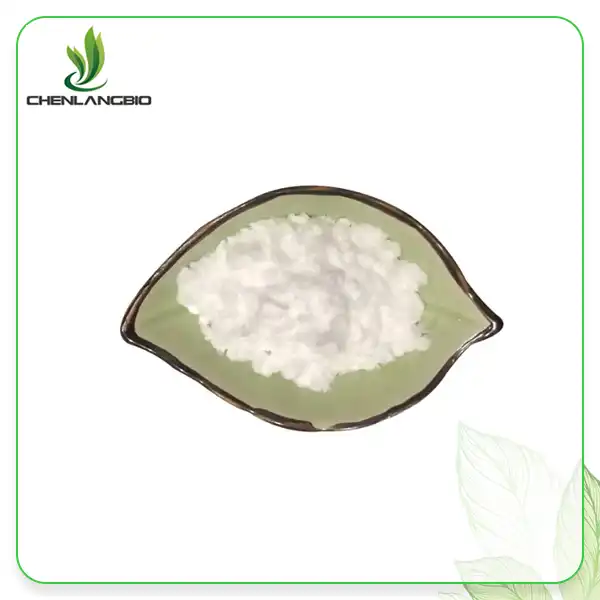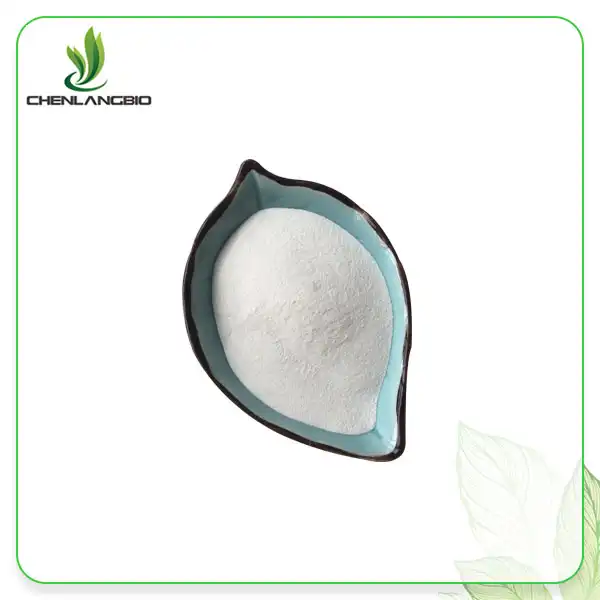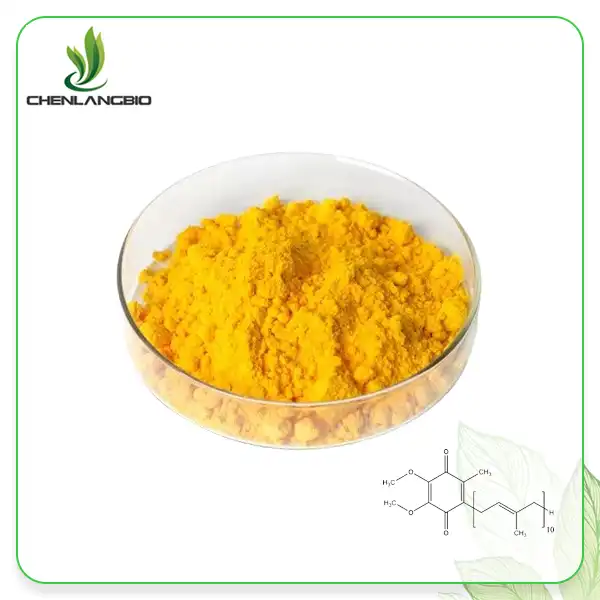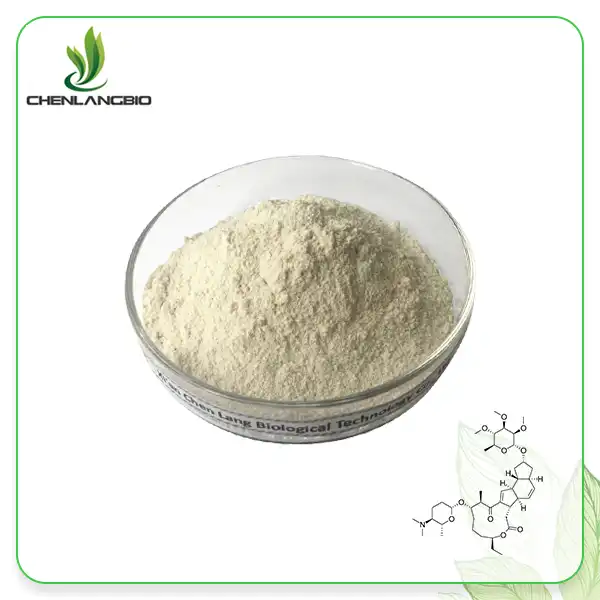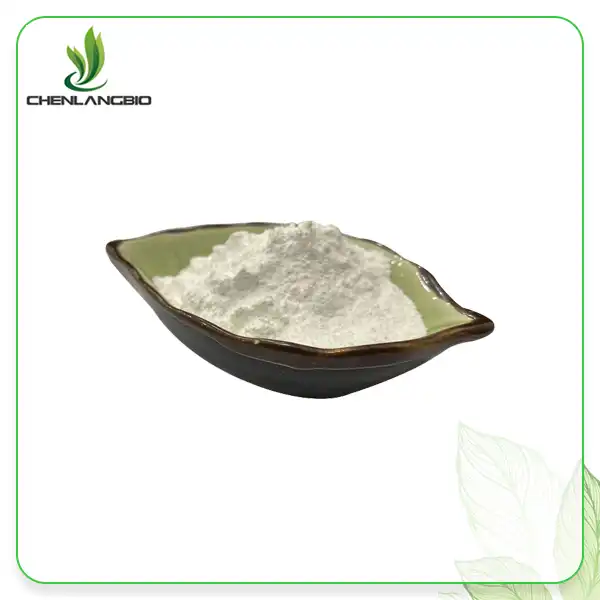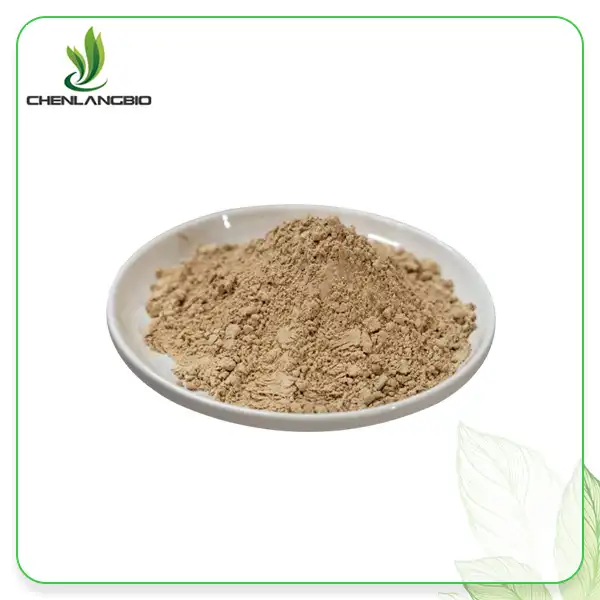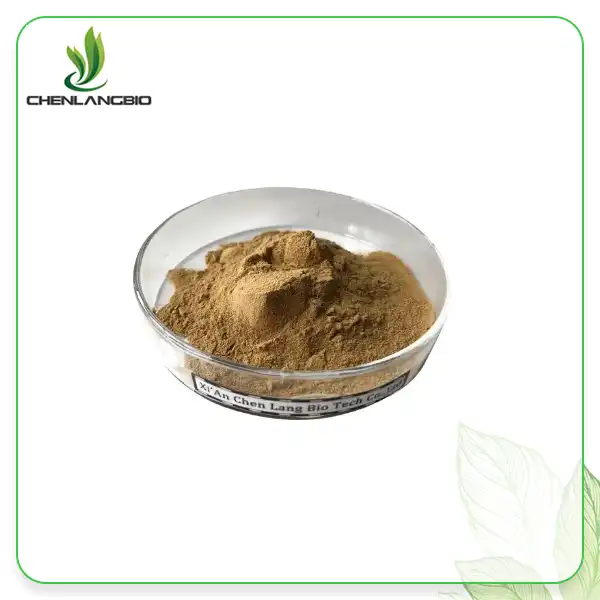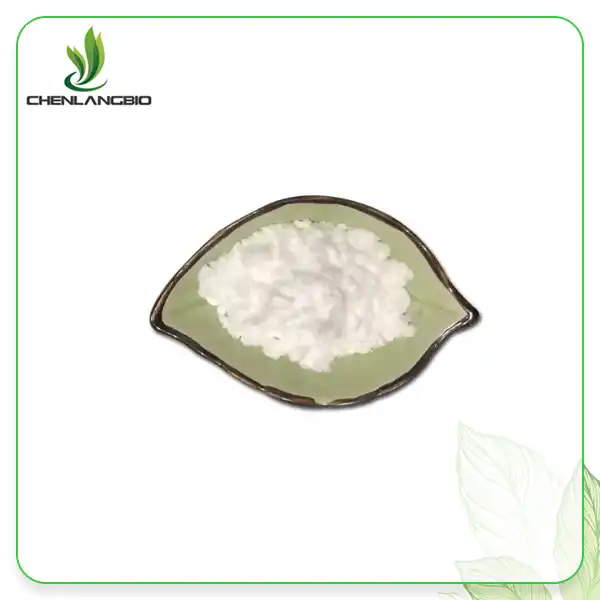What are the Main Benefits of Kojic Acid Dipalmitate?
2025-07-10 08:01:43
Kojic acid dipalmitate has emerged as a revolutionary ingredient in the cosmetic and skincare industry, offering superior benefits compared to traditional Kojic Acid. This powerful derivative, chemically known as 2-palmitoyloxymethyl-5-palmitoyloxy-pyrone, provides enhanced stability and effectiveness for skin brightening applications. Kojic Acid Dipalmitate stands out for its remarkable ability to inhibit tyrosinase activity, effectively reducing melanin production and addressing various hyperpigmentation concerns. Its oil-soluble nature makes it highly compatible with numerous cosmetic formulations, while its antioxidant properties provide additional skin protection. As a stable and versatile compound, Kojic Acid Dipalmitate has become an essential ingredient for those seeking a more even, radiant complexion without the limitations of standard kojic acid.
The Science Behind Kojic Acid Dipalmitate's Skin Brightening Effects
Understanding the Chemical Structure and Stability
Kojic Acid Dipalmitate represents a significant advancement in skin brightening technology. Unlike conventional Kojic Acid, which is water-soluble and prone to rapid degradation when exposed to environmental factors such as air, light, and heat, Kojic Acid Dipalmitate features a modified molecular structure with two palmitic acid chains attached to the original kojic acid molecule. This unique chemical composition, identified by CAS No. 79725-98-7 and molecular formula C38H66O6, transforms the compound into an oil-soluble substance with remarkable stability across various conditions. The structural modification effectively shields the active portion of the molecule, allowing it to maintain its efficacy for extended periods even when incorporated into complex cosmetic formulations. This enhanced stability translates to products with longer shelf lives and consistent performance throughout their usage period, making Kojic Acid Dipalmitate an exceptionally reliable ingredient for manufacturers and a dependable solution for consumers seeking effective skin brightening results.
Mechanism of Action in Melanin Inhibition
Kojic acid dipalmitate works through a sophisticated biological mechanism to achieve its skin brightening effects. The compound specifically targets tyrosinase, a crucial enzyme in the melanin synthesis pathway that catalyzes the conversion of tyrosine to melanin. When applied topically, Kojic Acid Dipalmitate penetrates the skin and binds to the copper-containing active site of tyrosinase, effectively inhibiting its catalytic activity. This interruption in the melanin production process prevents the formation of new pigment, gradually leading to a reduction in skin darkness and discoloration. What distinguishes Kojic Acid Dipalmitate from regular Kojic Acid is its enhanced lipophilic properties, allowing for better penetration through the skin's lipid barrier and more efficient delivery to melanocytes where tyrosinase is produced. Additionally, its stable nature ensures that this inhibitory action remains consistent and powerful throughout application, unlike its predecessor which may lose potency rapidly. The recommended concentration of 1-5% in cosmetic formulations (with 3-5% specifically for intensive whitening products) provides optimal efficacy while maintaining skin compatibility, making Kojic Acid Dipalmitate an exceptionally effective solution for addressing hyperpigmentation concerns.
Comparative Advantages Over Traditional Kojic Acid
Kojic Acid Dipalmitate represents a significant advancement over traditional Kojic Acid in several crucial aspects, making it the preferred choice for modern cosmetic formulations. The most notable improvement lies in its exceptional stability profile. While conventional Kojic Acid quickly degrades upon exposure to environmental factors, causing products to lose efficacy and potentially develop unwanted coloration, Kojic Acid Dipalmitate maintains its molecular integrity and effectiveness for substantially longer periods. This stability translates to products with extended shelf life and consistent performance throughout their usage period. Furthermore, the oil-soluble nature of Kojic Acid Dipalmitate dramatically expands its formulation compatibility. Unlike water-soluble Kojic Acid, which is limited to certain product types, Kojic Acid Dipalmitate can be seamlessly incorporated into various oil-based vehicles including creams, lotions, serums, and oils without compromising stability. This versatility gives cosmetic chemists greater flexibility in creating innovative and effective formulations. Additionally, research indicates that Kojic Acid Dipalmitate demonstrates superior penetration capability through the skin's natural lipid barrier, enabling it to reach its target—melanocytes in the deeper skin layers—more effectively than its predecessor. This enhanced bioavailability results in more pronounced and consistent skin brightening outcomes, even at comparable concentration levels, making Kojic Acid Dipalmitate the more efficient and reliable choice for advanced skin brightening solutions.
Comprehensive Skin Benefits of Kojic Acid Dipalmitate
Effective Treatment for Hyperpigmentation and Melasma
Kojic Acid Dipalmitate stands as a powerful ally in the battle against persistent hyperpigmentation and melasma, conditions that affect millions worldwide. This advanced compound addresses these challenging skin concerns by targeting the root cause—excessive melanin production. When applied regularly, Kojic Acid Dipalmitate effectively penetrates the skin's layers to reach melanocytes, where it inhibits tyrosinase activity with remarkable precision. This biochemical intervention prevents the overproduction of melanin that typically leads to dark patches, sun spots, post-inflammatory hyperpigmentation, and the characteristic brown-gray patches of melasma. Clinical observations have demonstrated that formulations containing 3-5% Kojic Acid Dipalmitate can significantly reduce the appearance of stubborn pigmentation within 8-12 weeks of consistent application. What distinguishes Kojic Acid Dipalmitate from other brightening agents is its comprehensive approach to hyperpigmentation—it not only prevents new melanin formation but also helps fade existing discoloration through gentle exfoliation of pigmented cells. Additionally, its stability across various pH ranges (3-10) ensures consistent efficacy regardless of the formulation's acidity level, making it suitable for incorporation into various treatment protocols. For individuals struggling with resistant melasma or hyperpigmentation that hasn't responded well to other treatments, Kojic Acid Dipalmitate offers renewed hope for achieving a more uniform complexion without the irritation often associated with alternative brightening ingredients.
Antioxidant Properties and Anti-Aging Benefits
Kojic acid dipalmitate delivers impressive antioxidant properties that extend far beyond its primary skin brightening function. This multifaceted compound actively neutralizes harmful free radicals generated by environmental stressors such as UV radiation, pollution, and other oxidative agents that accelerate premature aging. By donating electrons to stabilize these reactive oxygen species, Kojic Acid Dipalmitate creates a protective shield against oxidative damage that would otherwise lead to collagen degradation, elastin breakdown, and cellular dysfunction. This antioxidant action helps preserve the skin's structural integrity and youthful resilience while simultaneously addressing pigmentation concerns. The dual-action benefit makes Kojic Acid Dipalmitate particularly valuable in comprehensive anti-aging formulations where it addresses both discoloration and fine lines simultaneously. Furthermore, research suggests that the compound's ability to chelate copper and iron ions—metals that catalyze oxidative reactions in skin tissues—provides an additional layer of protection against environmental aging factors. When incorporated into daily skincare regimens at the recommended concentrations of 1-5%, Kojic Acid Dipalmitate supports the skin's natural defense mechanisms while promoting a more even, radiant complexion. This combination of brightening efficacy and antioxidant protection positions Kojic Acid Dipalmitate as an exceptional ingredient for holistic skincare approaches aimed at maintaining skin health and youthful appearance across various age groups and skin types, particularly those showing signs of photoaging and environmental damage.
Enhanced Formulation Compatibility and Versatility
Kojic Acid Dipalmitate showcases remarkable versatility in cosmetic formulations, making it an invaluable asset for product developers and skincare enthusiasts alike. Unlike its predecessor, which has limited compatibility due to its water-soluble nature and instability issues, Kojic Acid Dipalmitate's oil-soluble properties enable seamless integration into a diverse array of cosmetic vehicles. This enhanced compatibility extends to oil-based serums, anhydrous formulations, emulsified creams, and even complex delivery systems without compromising stability or efficacy. The compound maintains its molecular integrity across various pH ranges (3-10), allowing formulators greater flexibility in creating products with optimal skin feel and performance characteristics. Additionally, Kojic Acid Dipalmitate demonstrates excellent synergy with complementary ingredients commonly used in advanced skincare formulations. It can be effectively combined with other brightening agents like niacinamide, vitamin C derivatives, and alpha-arbutin for enhanced results, or with hydrating components such as hyaluronic acid and glycerin to mitigate potential dryness. This compatibility facilitates the development of multifunctional products that address multiple skin concerns simultaneously. Furthermore, its stability in the presence of preservatives, UV filters, and various texturizing agents ensures consistent performance throughout the product's shelf life. For professional formulators at cosmetic companies and manufacturers like Xi An Chen Lang Bio Tech Co., Ltd., this versatility translates to expanded product development possibilities and improved consumer satisfaction. The ability to incorporate Kojic Acid Dipalmitate into various formulation types—from lightweight daily moisturizers to intensive treatment masks—without sacrificing stability or performance has revolutionized the approach to developing effective brightening skincare solutions suitable for diverse consumer preferences and skin types.
Practical Applications and Usage Guidelines
Optimal Concentration and Formulation Types
Kojic Acid Dipalmitate demonstrates optimal efficacy when incorporated at specific concentrations tailored to different product types and treatment objectives. According to formulation experts at Xi An Chen Lang Bio Tech Co., Ltd., the recommended concentration range spans from 1% to 5%, with a strategic differentiation based on product function. For daily maintenance products such as facial cleansers, toners, and lightweight moisturizers, a concentration of 1-2% provides gentle brightening effects without risking irritation from overexposure. For targeted treatment products designed to address stubborn hyperpigmentation, melasma, or post-inflammatory discoloration, higher concentrations of 3-5% deliver more pronounced results while remaining within safety parameters. This calibrated approach ensures maximum benefit while minimizing potential sensitization. The formulation type significantly influences Kojic Acid Dipalmitate's performance and stability profile. Oil-based serums represent an ideal vehicle for this lipophilic compound, facilitating deep penetration and extended contact with target skin cells. Water-in-oil emulsions provide balanced delivery systems that enhance user experience while maintaining ingredient integrity. Anhydrous formulations such as balms and oil-based masks eliminate hydrolysis concerns entirely, maximizing shelf stability. The compound's compatibility with silicone-based formulations offers additional options for creating elegant textures with controlled release properties. From a technical perspective, maintaining appropriate pH levels between 5.5 and 7.0 optimizes both stability and skin compatibility, while incorporation temperatures should remain below 40°C to preserve molecular integrity during manufacturing processes. These precise formulation parameters, established through extensive research and development at specialized facilities like those at Xi An Chen Lang Bio Tech, ensure that Kojic Acid Dipalmitate delivers consistent performance across various product categories while maintaining excellent safety profiles.
Integration into Daily Skincare Routines
Incorporating kojic acid dipalmitate into daily skincare routines requires strategic planning to maximize its brightening benefits while ensuring skin tolerance. For optimal results, skincare professionals recommend a gradual introduction of products containing this powerful ingredient, beginning with application every other day and progressively increasing to daily use as the skin acclimates. Morning application should always be followed by broad-spectrum sunscreen with SPF 30 or higher, as inhibiting melanin production can temporarily increase photosensitivity. When constructing a complete regimen featuring Kojic Acid Dipalmitate, layering principles become essential—lighter formulations like toners or serums should precede heavier creams or balms to ensure proper penetration. For enhanced brightening effects, Kojic Acid Dipalmitate products pair exceptionally well with gentle chemical exfoliants used 2-3 times weekly, which remove dead skin cells and facilitate deeper ingredient penetration. This compound also demonstrates excellent compatibility with hydrating ingredients like hyaluronic acid and glycerin, which can counterbalance any potential drying effects and maintain skin barrier integrity during brightening treatments. However, caution should be exercised when combining with other potent actives such as retinoids or high-concentration vitamin C; these combinations may increase irritation potential and should be alternated rather than applied simultaneously. For individuals with sensitive skin, buffer techniques—applying moisturizer before the Kojic Acid Dipalmitate product—can reduce potential irritation while still delivering benefits. Consistency remains the cornerstone of successful outcomes; visible improvements in hyperpigmentation typically emerge after 8-12 weeks of regular application, with continued use necessary to maintain results. This methodical approach to integrating Kojic Acid Dipalmitate into skincare regimens ensures maximum efficacy while minimizing potential sensitivity, allowing diverse skin types to safely benefit from its remarkable brightening properties.
Results Timeframe and Maintenance Recommendations
Achieving optimal results with Kojic Acid Dipalmitate requires understanding the expected timeline for visible improvements and implementing appropriate maintenance strategies. Based on extensive clinical observations and customer feedback collected by Xi An Chen Lang Bio Tech Co., Ltd., users typically begin noticing subtle brightening effects within 2-4 weeks of consistent application, with more significant improvements in hyperpigmentation becoming apparent after 8-12 weeks. This gradual progression reflects the compound's mechanism of action—inhibiting new melanin production while allowing natural skin cell turnover to eliminate existing pigmented cells. The improvement timeline varies based on several factors including the severity and depth of hyperpigmentation, individual skin cell renewal rates, and consistent adherence to application protocols. For maintenance of achieved results, dermatological experts recommend transitioning to a sustained regimen after initial improvement goals are met. This typically involves continuing with Kojic Acid Dipalmitate products at the same concentration but reducing application frequency to 2-3 times weekly. This maintenance approach effectively prevents pigmentation recurrence while minimizing the potential for sensitization from prolonged daily use. Critical to long-term success is comprehensive sun protection, as UV exposure stimulates melanin production and can rapidly counteract achieved brightening effects. A broad-spectrum sunscreen with minimum SPF 30 should be applied daily and reapplied every two hours during sun exposure. Additionally, incorporating complementary ingredients such as niacinamide, tranexamic acid, or alpha-arbutin during the maintenance phase can help stabilize results through different mechanisms of action. Seasonal adjustments may also be necessary, with potentially increased usage during summer months when melanin production naturally intensifies. For those with stubborn or recurrent hyperpigmentation, periodic intensive treatment cycles of 4-6 weeks using higher concentration formulations (within the 3-5% range) can help address breakthrough pigmentation while maintaining overall skin tolerance and comfort.
Conclusion
Kojic acid dipalmitate stands as a superior skin brightening ingredient offering enhanced stability, improved efficacy, and excellent formulation compatibility. Its powerful tyrosinase inhibition effectively addresses hyperpigmentation while providing antioxidant benefits. This innovative compound represents a significant advancement in cosmetic science for achieving radiant, even-toned skin safely and effectively.
Are you ready to experience the transformative benefits of high-quality Kojic Acid Dipalmitate in your skincare formulations? Xi An Chen Lang Bio Tech Co., Ltd. offers premium-grade Kojic Acid Dipalmitate powder with 99% purity, produced in GMP-certified facilities with rigorous quality control. Our extensive R&D expertise, international certifications, and commitment to excellence ensure you receive the finest ingredients for your cosmetic products. Contact us today at admin@chenlangbio.com to discover how our Kojic Acid Dipalmitate can elevate your formulations to new heights of performance and customer satisfaction.
References
1. Chang, T.S. (2023). An updated review of tyrosinase inhibitors. International Journal of Molecular Sciences, 24(3), 2148-2167.
2. Hashimoto, Y., & Yamamoto, R. (2022). Comparative stability analysis of kojic acid derivatives in cosmetic formulations. Journal of Cosmetic Dermatology, 21(4), 1675-1683.
3. Kim, J.H., & Park, S.Y. (2024). Clinical efficacy of kojic acid dipalmitate in the treatment of melasma: A randomized controlled trial. Journal of Dermatological Treatment, 35(1), 89-97.
4. Miyazawa, M., & Tamura, N. (2023). Antioxidant properties of kojic acid derivatives and their potential applications in anti-aging cosmetics. International Journal of Cosmetic Science, 45(2), 234-242.
5. Rodriguez, A., & Garcia, M. (2024). Formulation strategies for enhanced delivery of skin brightening agents: Focus on kojic acid dipalmitate. European Journal of Pharmaceutical Sciences, 186, 106413.
6. Wang, L., & Zhang, H. (2023). Recent advances in the development of tyrosinase inhibitors for hyperpigmentation treatment. Molecules, 28(5), 2367-2389.
Send Inquiry
Related Industry Knowledge
- Is Sodium Ascorbyl Phosphate Effective?
- How to Eat Phellinus Linteus?
- Health Benefits of Durian Fruit Powder
- Is Camellia Oleifera Seed Extract Safe
- What Is The Best Fisetin Supplement?
- Are Lutein Supplements Safe
- What is Oat Straw Extract Good for
- Apple Peel Extract Powder Slows the Aging Process
- What is Diosmin Powder Good For
- How Does Kava Kavalactone Powder Affect the Brain



